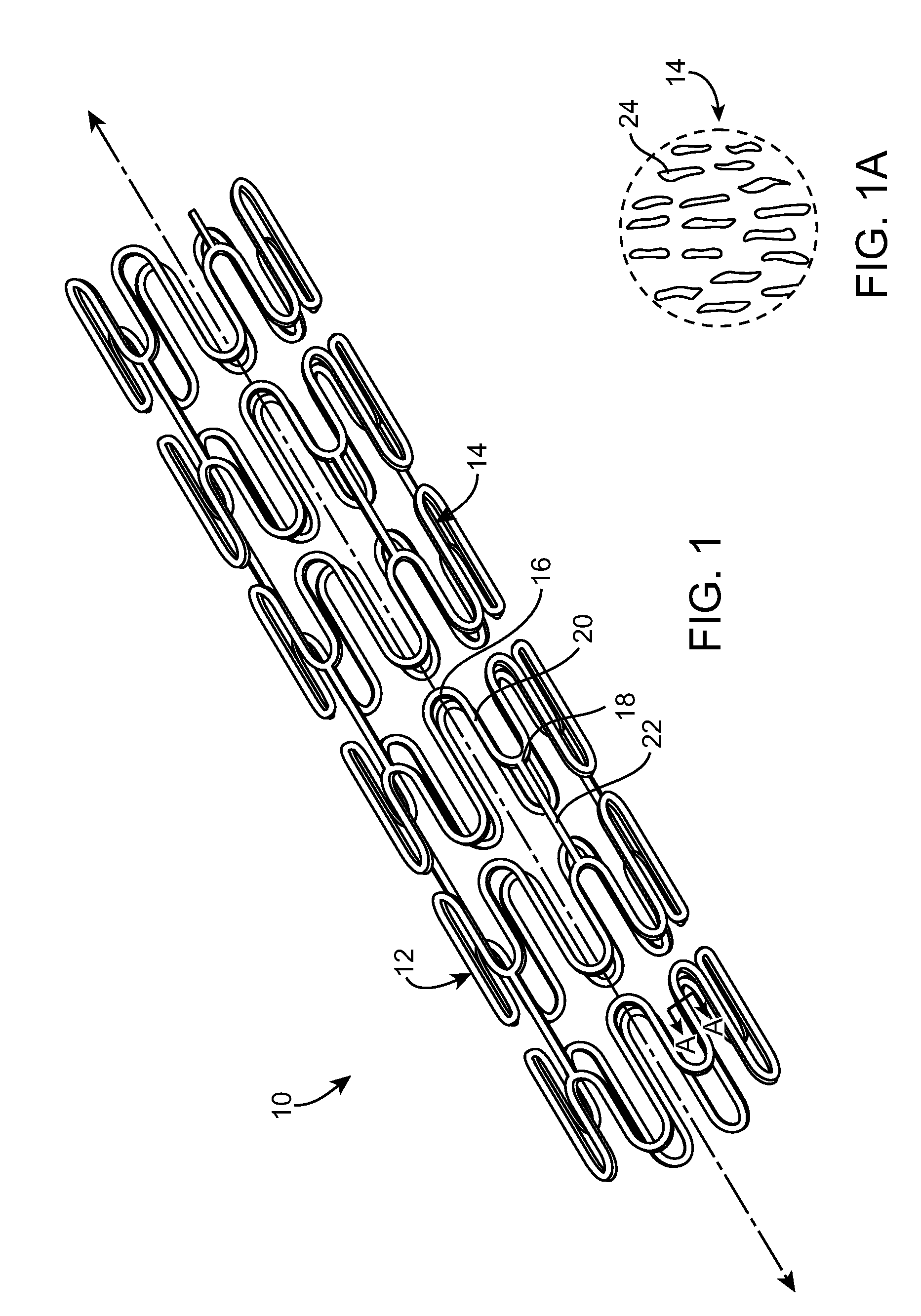Stent Having Controlled Porosity for Improved Ductility
a ductility and porosity technology, applied in the field of stents, can solve the problems of stents that may need to be over-expanded, vessel injury at the treatment site, and the extent of vessel restenosis, and achieve the effect of improving ductility
- Summary
- Abstract
- Description
- Claims
- Application Information
AI Technical Summary
Benefits of technology
Problems solved by technology
Method used
Image
Examples
Embodiment Construction
[0012]The following detailed description is merely exemplary in nature and is not intended to limit the invention or the application and uses of the invention. Although the description of embodiments of the invention may be in the context of treatment of blood vessels, the invention may also be used in any other body passageways where it is deemed useful. Furthermore, there is no intention to be bound by any expressed or implied theory presented in the preceding technical field, background, brief summary or the following detailed description.
[0013]Many high strength materials, such as alloy steels and amorphous metals, exhibit poor ductility that limits there ability to be used in vascular stent applications. In accordance with embodiments of the present invention, in order to improve ductility, these materials may be formed into a wire, sheet or tube having a 3-D porous network with pores that range from nanometer scale to micron scale. The pores allow volume changes as well as pro...
PUM
| Property | Measurement | Unit |
|---|---|---|
| pore size | aaaaa | aaaaa |
| thicknesses | aaaaa | aaaaa |
| thicknesses | aaaaa | aaaaa |
Abstract
Description
Claims
Application Information
 Login to View More
Login to View More - R&D
- Intellectual Property
- Life Sciences
- Materials
- Tech Scout
- Unparalleled Data Quality
- Higher Quality Content
- 60% Fewer Hallucinations
Browse by: Latest US Patents, China's latest patents, Technical Efficacy Thesaurus, Application Domain, Technology Topic, Popular Technical Reports.
© 2025 PatSnap. All rights reserved.Legal|Privacy policy|Modern Slavery Act Transparency Statement|Sitemap|About US| Contact US: help@patsnap.com


